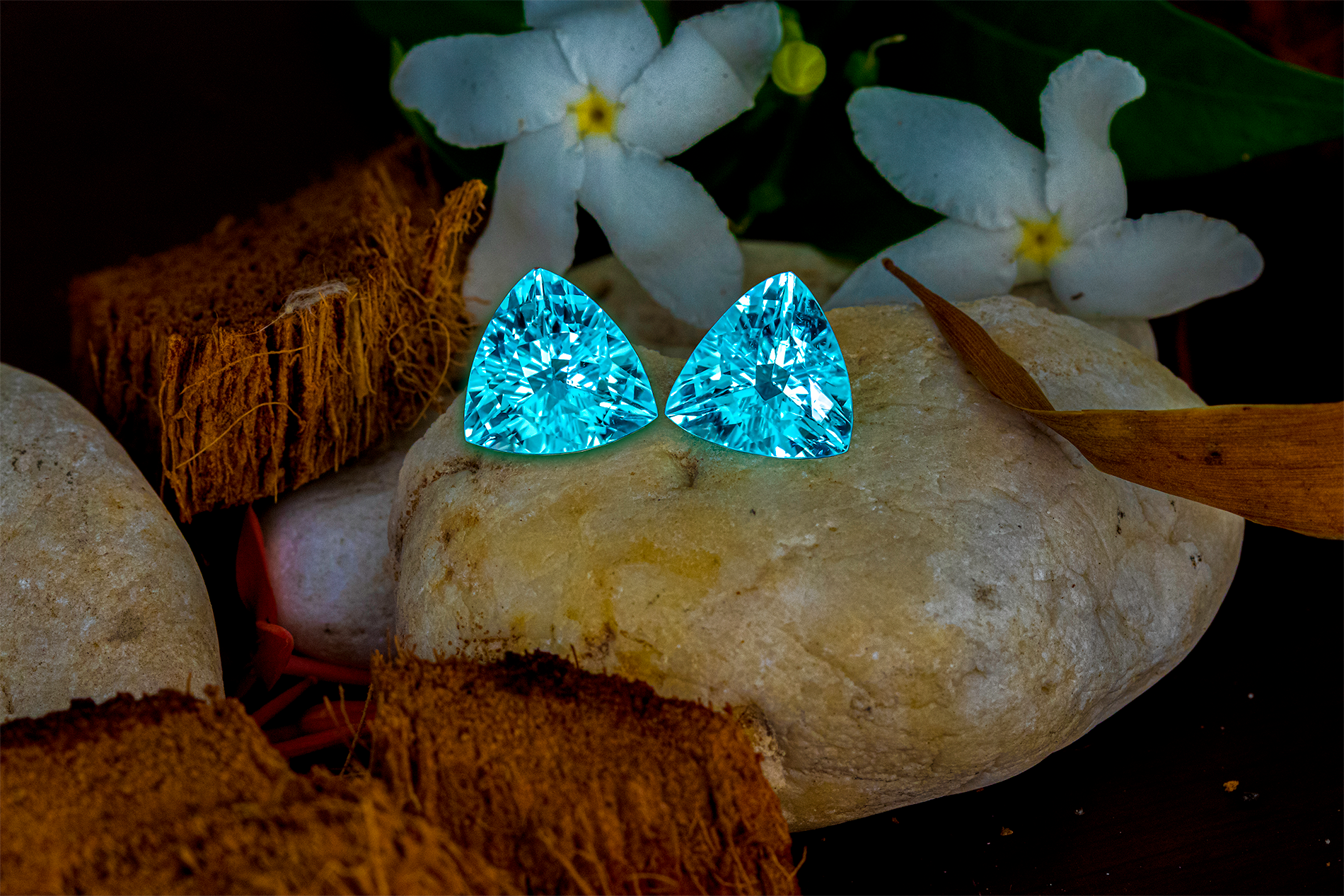Paraiba Tourmaline Is An Incredible Rare Gemstone
- by Shop RMC
-

Paraiba tourmaline is an incredible rare gemstone that is as breathtakingly beautiful as it is unique. The vivid almost unearthly colors of Paraiba tourmalines range from emerald through neon greens, turquoise to neon-blues, sapphire blue, sky blue, blue-violet, indigo, and purple. Some of these extraordinary hues are not found naturally in any other stone on earth. The Paraiba Tourmaline gets these unprecedented vivid colors through the presence of manganese and copper within the stone which is unique among tourmalines.

GEOGRAPHIC ORIGIN DETERMINATION OF PARAÍBA TOURMALINE
Vivid blue to green copper-bearing tourmalines, known as Paraíba tourmalines, are recovered from deposits in Brazil, Nigeria, and Mozambique. These tourmalines are sought after for their intense colors. Prices are based, in part, on the geographic origin of a stone, and determining provenance is thus an important aspect for Paraíba tourmaline. However, their geographic origin cannot be established by standard gemological testing and/or qualitative chemical analyses. GIA has established sophisticated criteria requiring quantitative chemical analyses to determine geographic origin for these tourmalines. These criteria were based on several hundred samples from known sources spanning the three countries. Highly accurate and precise quantitative elemental concentrations for Cu, Zn, Ga, Sr, Sn, and Pb are acquired with laser ablation–inductively coupled plasma–mass spectrometry (LA-ICP-MS). These data can then be plotted as a function of elemental concentration for accurate geographic origin determination.
In Brief
• Geographic origin can have a significant impact on the value of Paraíba tourmaline.
• Quantitative chemical analysis with LA-ICP-MS provides a robust tool for origin determination.
• The trace elements Cu, Zn, Ga, Sr, Sn, and Pb are the most useful discriminators for Paraíba tourmaline origin.
• In limited cases where there are no matching reference data, an “inconclusive” origin determination would be required.
Source: GIA





